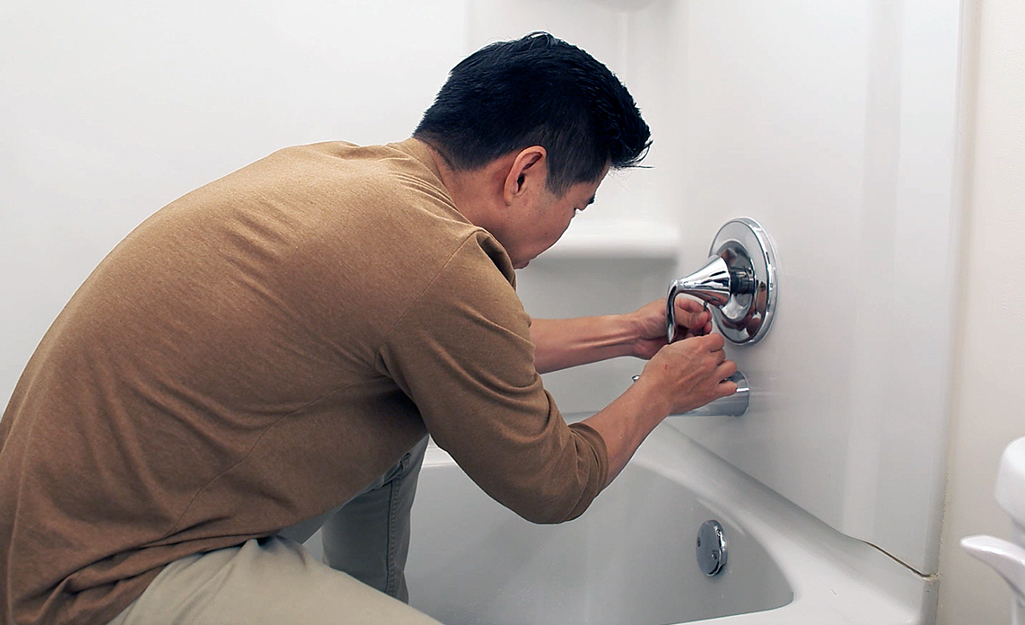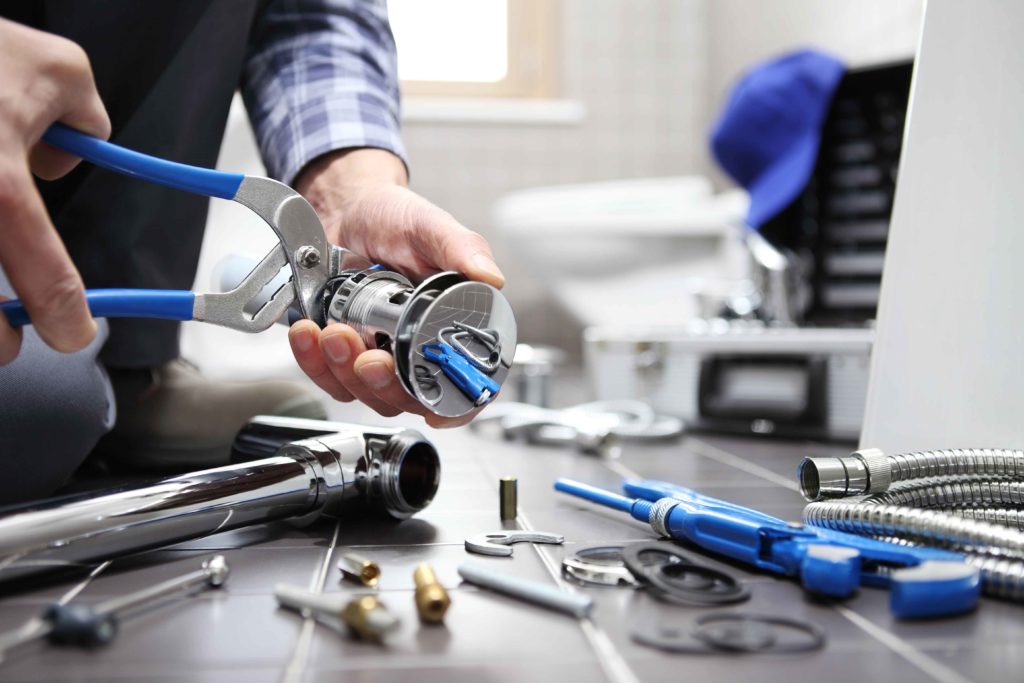The Motives Behind Dealing with a Faulty Faucet
The Motives Behind Dealing with a Faulty Faucet
Blog Article
Listed here down the page you will discover a lot of wonderful content involving Should I Repair or Replace a Leaky Faucet?.

Dripping faucets could feel like a small trouble, yet their impact goes beyond just the inconvenience of the noise. From wasting water to incurring unneeded monetary costs and health threats, neglecting a dripping tap can bring about different consequences. In this post, we'll delve into why it's critical to address this usual home concern quickly and properly.
Wastage of Water
Environmental Influence
Dripping faucets contribute substantially to water wastefulness. According to the Environmental Protection Agency (EPA), a single tap trickling at one drip per secondly can waste more than 3,000 gallons of water annually. This not only stress water sources yet additionally impacts ecological communities and wild animals depending on them.
Step-by-Step Overview to Dealing With a Dripping Tap
Devices Called for
Prior to attempting to repair a leaking faucet, collect the essential devices, consisting of a flexible wrench, screwdrivers, substitute parts (such as washers or cartridges), and plumber's tape.
Usual Faucet Issues and Their Solutions
Identify the sort of faucet and the specific problem causing the drip. Typical troubles include worn-out washers, corroded shutoff seats, or faulty O-rings. Refer to supplier guidelines or online tutorials for step-by-step assistance on repair services.
Financial Prices
Increased Water Bills
Beyond the environmental effect, trickling faucets can inflate water bills substantially. The built up wastage in time equates into higher utility expenditures, which can have been stayed clear of with prompt repair services.
Possible Property Damages
In addition, extended leaking can lead to harm to components and surfaces bordering the faucet. Water accumulation can create staining, corrosion, and also structural issues if left ignored, causing added repair work expenses.
Health and wellness Problems
Mold and Mildew Development
The constant visibility of moisture from a leaking faucet develops an optimal environment for mold and mildew and mold growth. These fungi not just endanger indoor air high quality yet also position wellness threats, particularly for individuals with respiratory conditions or allergic reactions.
Waterborne Illness
Stationary water in trickling taps can end up being a breeding ground for germs and various other virus, raising the threat of waterborne conditions. Contaminants such as Legionella bacteria thrive in stationary water, possibly bring about significant ailments when consumed or breathed in.
DIY vs. Professional Repair
Pros and Cons of DIY Fixing
While some may attempt to deal with a leaking faucet themselves, do it yourself repair services come with their very own set of challenges. Without correct expertise and devices, DIY efforts can exacerbate the problem or lead to insufficient repairs, extending the problem.
Benefits of Working With a Professional Plumber
Employing a specialist plumber guarantees that the underlying root cause of the trickling faucet is dealt with properly. Plumbings possess the experience and equipment to diagnose and repair faucet issues effectively, saving time and lessening the danger of additional damages.
Environmental Responsibility
Individual Contribution to Conservation
Taking responsibility for fixing trickling taps lines up with wider efforts toward water preservation and ecological sustainability. Every individual's actions jointly make a substantial impact on maintaining priceless resources.
Lasting Living Practices
By focusing on prompt fixings and embracing water-saving habits, people add to lasting living practices that profit both present and future generations.
Safety nets
Regular Upkeep Tips
To stop leaking taps, perform regular maintenance such as cleaning up aerators, inspecting for leaks, and changing damaged parts immediately. In addition, consider setting up water-saving gadgets or updating to extra efficient fixtures.
Value of Prompt Fixes
Attending to leaking taps as quickly as they're observed protects against more water wastefulness and possible damages, inevitably conserving both water and cash over time.
Effect On Residential Property Value
Assumption of Well-Maintained Building
Keeping a property in good condition, consisting of attending to maintenance concerns like leaking faucets, boosts its perceived worth and value amongst prospective purchasers or tenants.
Impact on Resale Value
Properties with well-kept plumbing fixtures, including taps, command higher resale worths in the property market. Dealing with trickling faucets can contribute to a positive perception throughout residential or commercial property assessments and arrangements.
Conclusion
Dealing with a leaking tap surpasses mere convenience; it's a vital action towards saving water, minimizing economic prices, and protecting health and wellness and residential property. Whether via do it yourself repair services or expert support, taking action to fix trickling taps is a little yet impactful way to advertise accountable stewardship of resources and contribute to a much healthier, much more lasting future.
How to Fix a Leaky Faucet: Step-by-Step Repair Guide
A leaky faucet may seem like a simple annoyance, but if it's not fixed promptly, that leak could cost hundreds to potentially thousands. From water damage to mold, mildew, and high water bills, even a tiny leak can be catastrophic if left unattended. Damage like this can even affect the overall value of your home, so it's important to take the right approach for leaky faucet repair. You may need the help of a plumber in some cases, but we've got a few tips you can try on how to fix a leaky faucet before calling the pros.
Four Faucet Types
When you're learning how to fix a leaky faucet, the first step is knowing what kind of faucet you're working with! There are four common types.
Cartridge Faucets
Cartridge faucets come in one- or two-handled varieties. In one-handled cartridge faucets, hot and cold water combines in a single cartridge. In the two-handled versions, hot and cold water are controlled separately and mixed in the faucet.
Ball Faucets
Ball faucets have a single lever you push up and down to adjust the pressure and rotate to change the temperature. A slotted metal ball controls the amount of water allowed into the spout.
Compression Washer Faucets
They're the oldest type of faucet, but they're still used in many homes — especially older ones. Compression faucets have two separate handles that, when turned, raise or lower the washer that seals a water valve. This valve stops water from flowing through the faucet when it is turned off.
Disc Faucets
Disc faucets rarely need to be repaired due to their maintenance-free design. The water flow is controlled by two discs — the upper one raises and lowers against a fixed lower disc, creating a watertight seal. If your disc faucet starts leaking, you may need to replace the seals or clean residue buildup from the inlets.
Fixing a Leaky Faucet
Step 1: Turn Off the Water
Whether you're learning how to fix a leaky bathtub faucet or how to fix a leaky kitchen faucet, always turn off the water supply to your working area when you're fixing a leak. The last thing you want is a flood added to your list of things to fix.
Look for the shutoff valves below your sink or around the tub and turn them clockwise to stop the water flow. If your faucet doesn't have shutoff valves, you may need to turn off the water for the whole house. Check to make sure it's off by turning the faucet on. If nothing comes out, you're ready to start the repair.
Step 2: Take Apart the Faucet
How you disassemble your faucet depends on the type of fixture you have. You can use a flathead screwdriver to remove the caps on top of the handle or handles for cartridge and compression faucets. Inside, you should see handle screws. Unscrew these with a screwdriver to remove the handle.
Disc- and ball-style faucets will typically have an inlet screw near the handle, and removing that will reveal the interior of the faucet.
Detach the Valve Stem
For cartridge- and compression-style faucets, you'll see the inner valve stem or cartridge once you remove the faucet handles. If you have a compression faucet, unscrew the brass valve stem. If you have a cartridge faucet, pull out the cartridge. If your cartridge has been in place for a while, it may require some tools or extra force to remove it due to mineral deposits.
Examine and Replace Parts
Once you've removed the parts, check them out to confirm what needs to be replaced. You may see corroded rubber washers, O-rings, stems, or cartridges. On a ball-style faucet, check the seats and springs for damage.
If you need to repair a leaky disc faucet, check the inlet and seals on the lower disc.
Once you determine what parts must be replaced, visit your local hardware store. Bring the damaged parts with you to ensure you can purchase the correct components to replace them.
Clean Valves and Faucet Cavity
If you've removed a stem or cartridge, you may notice mineral buildup in the faucet's threads. Use white vinegar to clean the valve seat by soaking it for a few minutes, then scrub it away with a soft toothbrush and rinse with warm water. You can also clean the interior of the faucet in the same way.
Reassemble the Faucet
Once your faucet is cleaned and the required parts have been replaced, it's time to reassemble it. Put the pieces back together and slowly turn the water supply back on. Doing this slowly is crucial because too much initial water pressure can damage the new hardware you've just installed.
https://homewarranty.firstam.com/blog/how-to-fix-leaky-faucet

We were shown that editorial about Why Are My Faucets Dripping (And Can I Fix It Myself)? from an acquaintance on another web property. Feel free to pause to promote this blog posting if you liked it. Thank you for being here. Revisit us soon.
Report this page